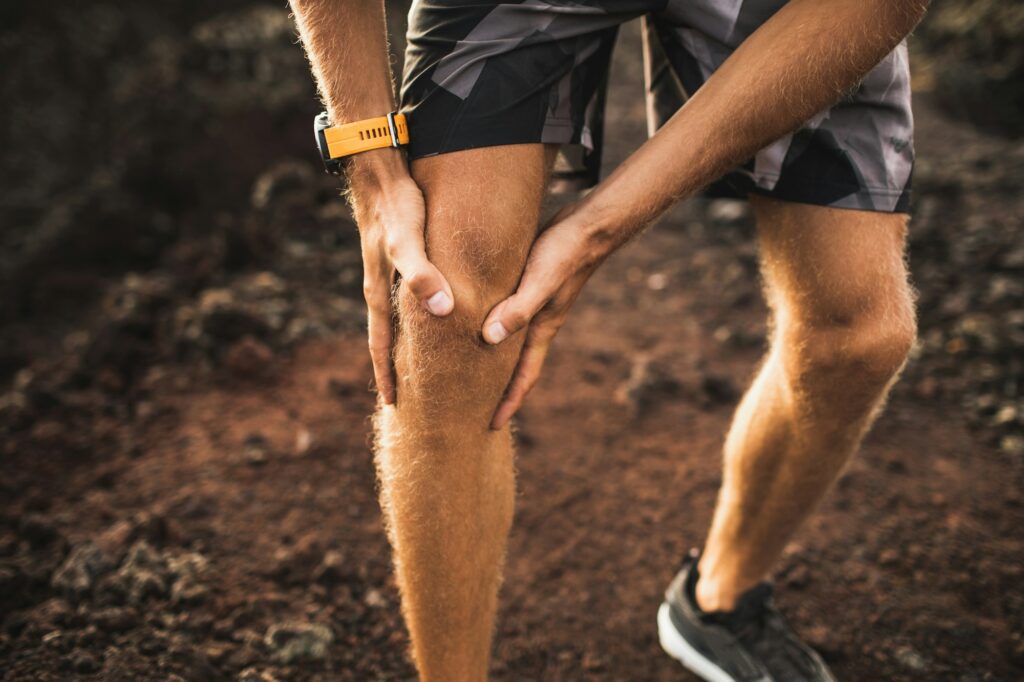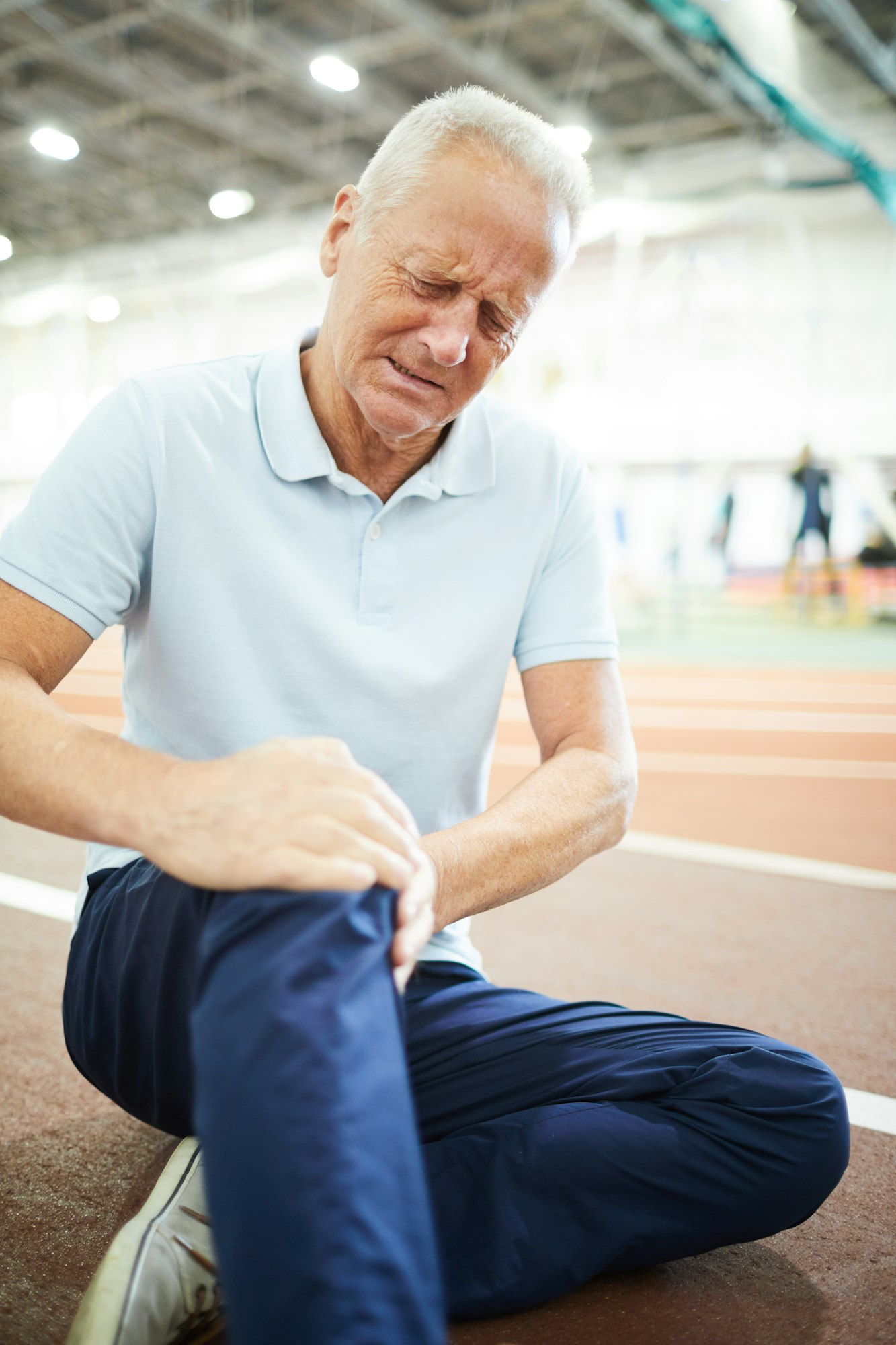Table of Contents
Introduction
Running hurts – even if you can’t feel it… yet.
Plantar fasciitis, Achilles tendonitis, medial tibial stress syndrome, metatarsalgia – these are all conditions that can develop in your feet and contribute to what we call “runner’s knee,” or more generally “painful knees (due to activities that involve running).”
If you are a runner, you probably have dismissed knee pain as a natural result of going on your morning jogs, or training for that 5K or marathon.
But this shouldn’t be the case. In fact, although running is blamed for knee pain, it is not actually running that causes problems. Instead, it is the way you run that can lead to pain and injury in your knees. But if you train your body to run properly – in a way where minimal impact and unnecessary stress isn’t as forced on your feet and knees – you may never experience knee problems again.
Yes, we know – sounds too good to be true. But it is entirely possible, and we are here to help you get it done!
What Do Your Feet Have to Do with Your Knee Pain?
Knee pain is almost always caused by one of two things – or even both: poor biomechanics and/or overuse. And both of them are directly related to your feet.
Indeed, your feet are the foundation for your body – and most likely the root cause of your knee pain.
Though 90% of feet structures are normal at birth, 8% of us develop foot or ankle problems by the first year. And this number sky-rockets to a whopping 41% by the time we hit the age of 5. When our sweet 20’s come around, 80% of us are experiencing some type of foot and/or ankle issue.
The truth is that if your feet are misaligned even in the slightest, chances are that you can develop painful conditions both in your feet and your knees. And, what’s worse – many foot conditions eventually contribute to health concerns farther up the kinetic chain, including general back and neck pain. That’s why it is important that you stay on top of your foot health by taking preventative measures to avoid knee pain in the first place.
What Can You Do to Prevent Knee Pain?
A significant factor in reducing knee injury and pain caused by improper biomechanical forces is something that’s frequently overlooked – the use of custom orthotics to improve alignment issues.
Custom orthotics are used to align and support the foot and ankle in a more normal position to prevent dysfunction and/or improve function of movable body parts. We recommend them in order to:
- Promote a symmetrical foundation by blocking pronation or supporting supination.
- Provide heel strike shock absorption.
- Prevent biomechanical stress up the kinetic chain.
- Enhance neuromuscular re-adaptation.
In short, custom-made orthotics can help reduce overall pain caused by poor biomechanics. But there are also some running habits that you can change in order to supplement the support that you will find in orthotics.

What is the Proper Way of Running?
Avoid heel striking
Don’t over-stride and let your feet get ahead of you. Always make it a point to never step past your knees, and learn to let your legs swing rearward, not forward. When your feet land in front of your knees, you are putting on the brakes with every foot strike, sending a major impact to your knees, which were never designed to be shock absorbers.
Eventually, all of this impact to your knees leads to either joint pain or soreness in your muscles. If this happens to you, listen to what your body is trying to tell you, and change your stride mechanics. Instead, lean from your ankles and let your stride open up behind you. Let your feet land beneath you instead of in front of you.
Don’t lift your knees when you run
Lean your entire body forward
Keep your knees soft and bent
Keep your feet aimed in the direction you are running
This is important.
If your feet splay it can create knee pain because you’re torqueing your knee with every foot strike, imagine someone grabbing your ankle and twisting it to the outside 1200 times every 10 minutes!
Instead, always run with your feet pointed in the direction you’re headed. Rotate your entire leg inward towards your centerline until your feet are parallel and pointing forward. This can permanently fix your problem by strengthening your adductors to realign your legs. Then, your knees will hinge in the direction they were designed to, instead of twisting as they bend.
Foot splay can create inflammation in the iliotibial band which, at its lower end, attaches to the tibia just below your knee. The misalignment of your legs can often be mistaken for a knee problem.
Contact Us Today!
Taking good care of your knees should be a high priority, especially if you want to continue to enjoy running year after year. Reducing torque and impact are the two best places to work on your running form – this is how you begin to build a life insurance policy for your knees, and they’ll thank you every time you lace up.
However, if you do find yourself feeling foot or knee pain, you should contact us immediately. All you have to do is call us at 916-961-3434 or simply fill out our handy contact form online.
Looking to schedule an appointment with a physician?
Schedule an appointment with us by calling (916) 961-3434 or by clicking the button below to begin requesting your appointment today!



